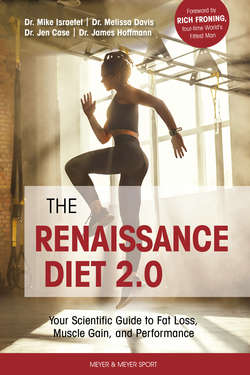Читать книгу The Renaissance Diet 2.0 - Mike Israetel, James Hoffmann - Страница 40
На сайте Литреса книга снята с продажи.
The Caloric Constraint Hypothesis
ОглавлениеSince we cannot consume macronutrients without their inherent calorie content, and since calorie considerations are first priority in diet design, all three macros must be manipulated in concert to fit pre-made calorie restrictions or demands. This idea is termed the Caloric Constraint Hypothesis (CCH). Since your dietary goal will begin with a total calorie count, this total will dictate how macronutrients can be distributed within your diet. When one macronutrient amount is raised or lowered, either one or both of the remaining macronutrients must be adjusted as well to keep calories constant. Since all of the macronutrients have an effect on diet outcomes, it would be incorrect to simply say “eat more protein to grow muscle” without considering what the effect will be on carbohydrate and fat intakes. Thus, in assigning macronutrient totals, you should determine the total calories needed for the goal, determine optimal ranges of macronutrient totals, and then adjust those macronutrients to both meet minimum values and fit within the caloric constraints. There may be a few possibilities within the constraints and macro ranges where trade-offs can be made for desired outcomes or preferences. In chapter 10 we will go into exactly how to make the decisions and calculations for macronutrient ratios within a caloric constraint.
Figure 3.1. A depicts protein, carb, and fat ratios when protein is set at its optimum. B, C, and D illustrate the relative carb and fat deficiencies that can result from overeating protein within a given caloric constraint.
